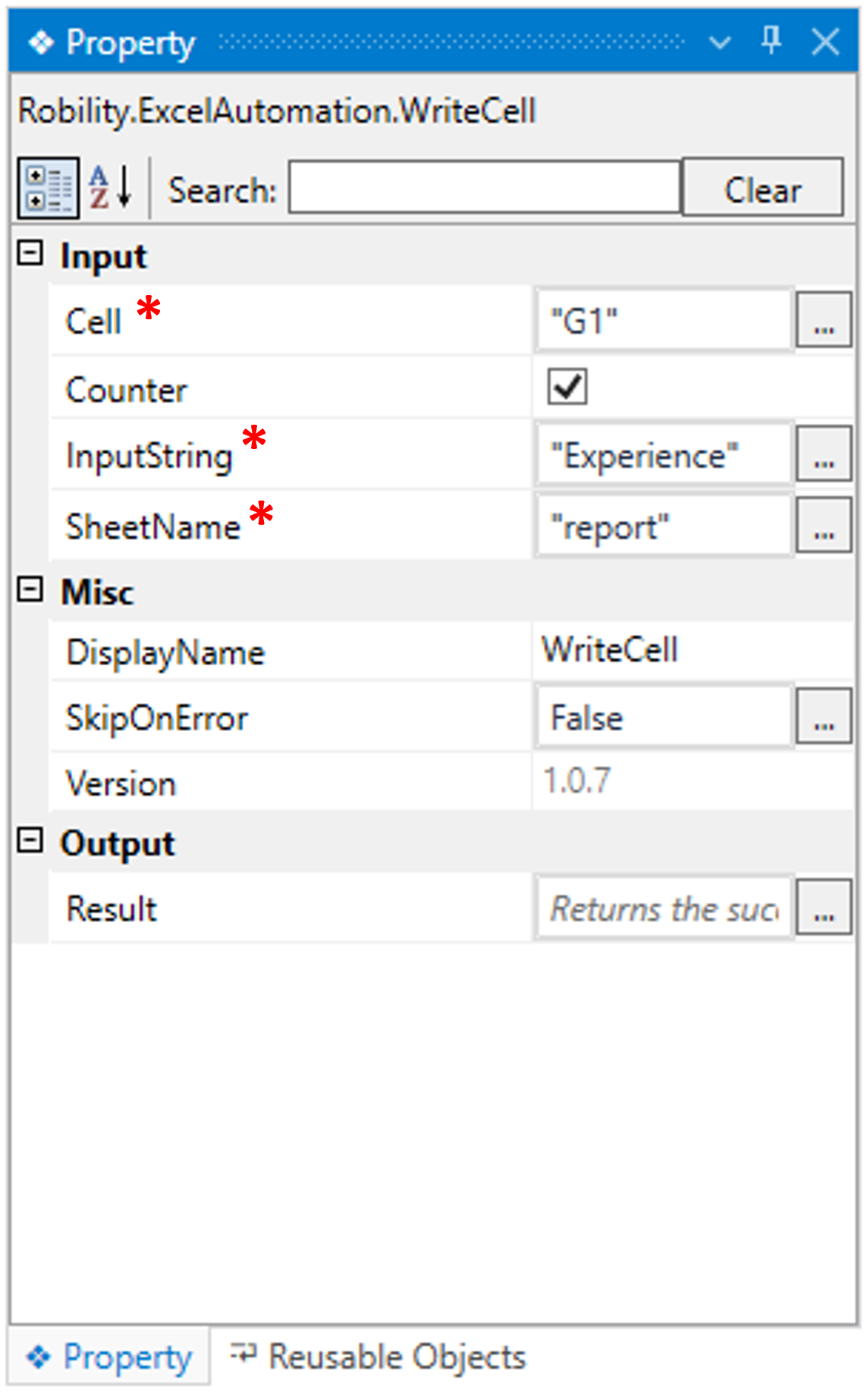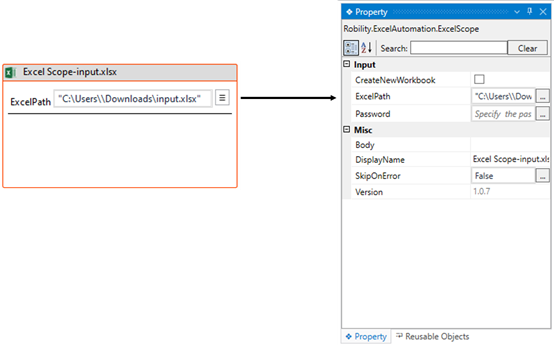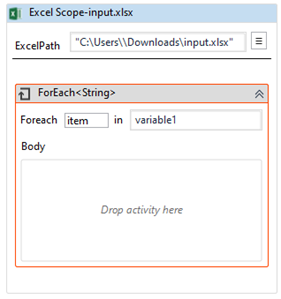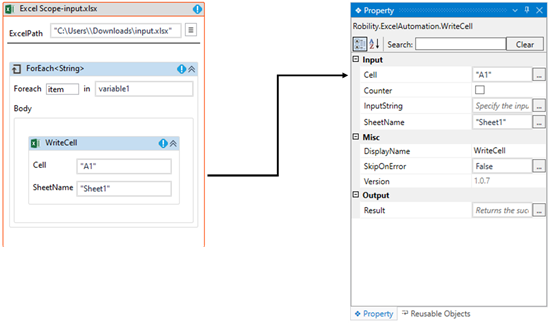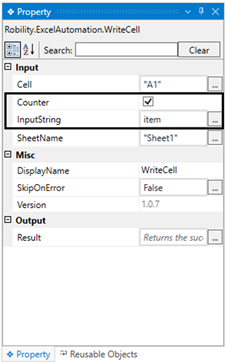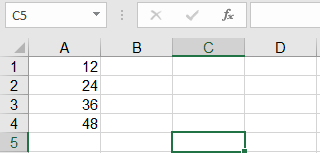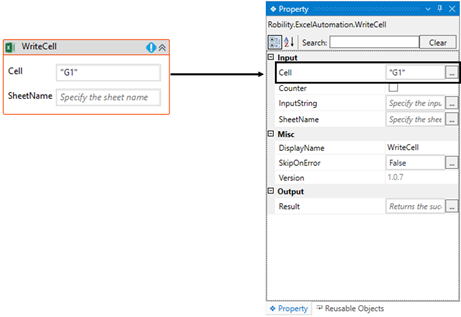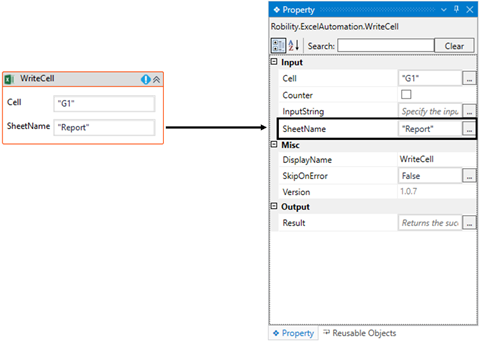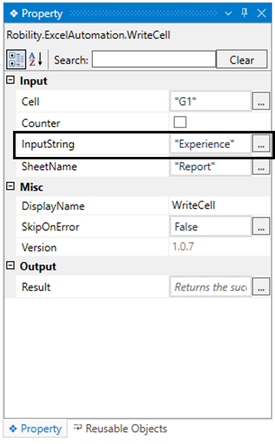This activity helps the user to provide the “Input” text or values to the specified
cell in the input excel sheet. This activity works within the Excel scope activity.
Technical Reference
|
INPUT |
Cell: Indicates to provide the “Cell” reference to write the data in it. This parameter accepts values in the “String” datatype. |
|
|
Counter: This parameter helps increment the row value to write the input string in each iteration.
By default, the box will be unchecked.
When left empty, it will not be considered. |
||
|
InputString: Indicates to provide the “Input” string to enter the data in the specified cell value.
You can either hardcode the “String” variable here or enter the values in “String”.
This parameter accepts values in the “String” datatype. |
||
|
SheetName: Indicates to provide the “SheetName” to enter the data in the provided input excel worksheet. This parameter accepts values in the “String” datatype." |
||
|
MISC |
DisplayName: Displays the name of the activity. The activity name can be customized, which aids in troubleshooting. |
|
|
SkipOnError: Specify the "Boolean" value as "True" or "False."
True: Continue executing the workflow regardless of any errors thrown. False: Halt the workflow if it encounters any errors. None: If the option is left blank, the activity will, by default, behave as if "False" were chosen. |
||
|
Version: It indicates the version of the feature being used. |
||
|
OUTPUT |
Result: It provides the ability to view the execution status of the activity. It returns values in "Boolean."
True: Indicates that the activity has been executed successfully without any errors. False: Indicates that the activity has been unsuccessful due to an unexpected error being thrown. |
* Represents mandatory fields to execute the workflow
How to increase the row values?
Here I am creating a new excel sheet to showcase the sample. Within it, I am
increasing the row value to write the input string on increment.
1. Drag and drop the “ExcelScope” activity.
2. Double click on the activity to provide the file path of the excel sheet.
3. Now, place the “ForEach” activity in the excel scope.
a. Here I am using this activity to iterate and write each value in the rows.
b. Create a variable with “ArrayofString” datatype with default value as
“New String(){“12”,”24”,”36”, “48”}.
c. Now choose the “TypeArgument” as “String” and provide the Array of
String variable in the “Values” box.
4. Next, add the “WriteCell” activity inside the “ForEach” activity scope.
a. Double click on the activity to provide the essential details.
b. Here, I am providing the “Cell” value as “A1”.
c. Moving to the “SheetName” and providing the value as “Sheet1”.
d. Navigating to the “Counter” in the property and check the box.
e. Here we are choosing this box to increase the row values to
enter the input string in each row.
f. Provide the “InputString” as “item”.
5. Now, execute the workflow.
Here’s an example of how “WriteCell” activity works –
In the following example, I am using the “Excel sheet” which is used to
automate in the Use case. To get a better understanding, click here.
This report encompasses employee particulars like Name, Position, Age,
Office, Start date, and Salary.
1. Here, I am continuing from the “InsertAndDeleteColumn” activity’s
example.
2. Now, placing the " WriteCell " activity within the scope activity.
a. Here I am going to write the header for the new column created as
“Experience”.
b. Double click on the activity and providing the cell value as “G1” as the
new column created already.
c. Next, moving to “SheetName” and providing the value as “Report”.
d. Navigating to the “InputString” property to provide the input value
for the cell.
i. Here I am providing the input value as “Experience” as column header.
e. In this case, I am not increasing the row count, hence left the “Counter”
option blank.
Click here to view how the activity is used in the workflow.

